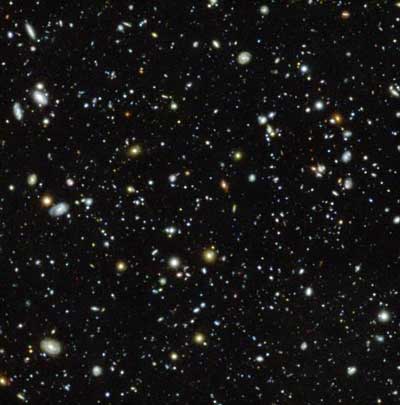| Jan 15, 2018 |
The universe up close
|
|
(Nanowerk News) An international team of astronomers with the involvement of the University of Göttingen has conducted the deepest spectroscopic survey ever. Using the MUSE instrument (Multi Unit Spectroscopic Explorer) on European Southern Observatory’s (ESO) Very Large Telescope the scientists succeeded to measure distances and properties of 1600 very faint galaxies including 72 galaxies that had never been detected before.
|
|
This dataset resulted in several science papers that were published in a special issue of the journal Astronomy & Astrophysics.
|
 |
| The Hubble Ultra Deep Field seen with MUSE. (Photo: ESO/MUSE HUDF collaboration)
|
|
The astronomers focused on the Hubble Ultra Deep Field (HUDF), a much-studied patch of the southern constellation of “Fornax”. Three to five working groups independently analyzed the obtained data with their own specialist software. To prevent mistakes, all teams compared their results among each other. Only if at least two or three teams came to the same result, the data of the distances and properties of the galaxies farthest away and oldest were included in the final catalogue. Scientists of Göttingen University formed one team that analyzed the spectroscopic information.
|
|
The much more advanced observation results compared to the images of the NASA/ESA Hubble Space Telescope and others are explained by the technology of the MUSE instrument: It splits up the light from every point in the image into its component colours to create a spectrum. This allows scientists to measure the distance, colours and other properties of all the galaxies that can be seen with the MUSE instrument. Galaxies are the basic elements of the universe. They consist of millions to billions of stars.
|
|
“The MUSE data provide a new view of dim, very distant galaxies, seen near the beginning of the Universe about 13 billion years ago”, explains Göttingen Astrophysicist Professor Wolfram Kollatschny, who participated in the study. “The instrument detected galaxies 100 times fainter than in previous surveys, adding to an already richly observed field and deepening our understanding of galaxies across the ages.”
|

